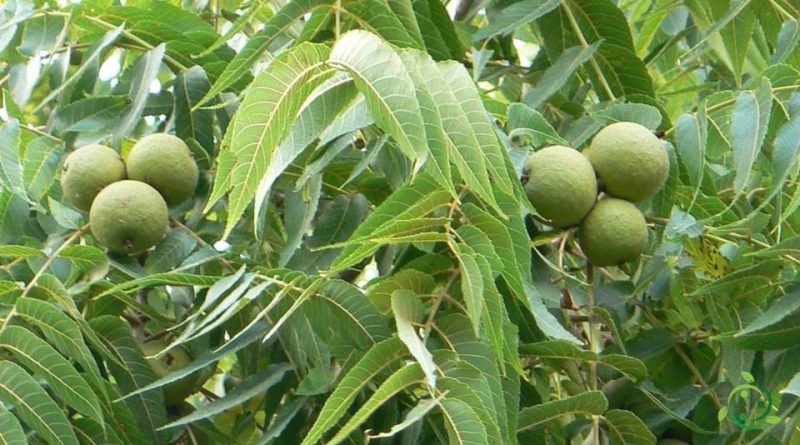Reproduction of black walnut
Reproduction of black walnut
The eastern American black walnut (Juglans nigra L., 1753) is a tree of the Juglandaceae family, native and widespread in North America.
Suitable breeding habitat –
The black walnut is a plant native to the eastern United States where it forms mixed forests, from the plains to the lower mountainous belt.
Its range of origin extends over much of the eastern United States. It is absent from the coastal plain south of North Carolina and the Mississippi Valley, and is not found in the northern swath of the eastern United States, where the frost-free season is too short for nuts to develop. Its western range extends to the eastern Great Plains, after which the climatic conditions become too dry for this plant.
Juglans nigra was introduced in Europe around 1629 and has been widely used in parks and gardens (in Germany it has been experimented as a forest essence).
Propagation –
The black walnut is a plant grown in the United States and introduced in Europe in 1629 as an ornamental plant or in the forestry sector.
For the reproduction of this plant it must be taken into account that Juglans nigra trees tend to be monoecious, that is, they produce first pollen and then pistillate flowers or produce pistillate flowers and then pollen.
Also when growing young trees, weed control is critical for healthy tree settlement, without weed control young trees are significantly damaged in their growth.
These plants also need deep, fertile, well-drained soil and a temperate climate.
Propagation can take place from seed, or more rapidly, by cutting.
It should be remembered that the black walnut produces juglone, an exudate from the roots, which due to allelopathy, is toxic to other species of plants and does not allow them to grow near the tree.
Ecology –
Black Walnut is one of the most abundant trees in the eastern United States, particularly in the Northeast, and its numbers are increasing due to outbreaks affecting other tree species.
In addition, the widespread cutting of oaks due to damage from the gypsy moth in the 1970s and 1980s particularly helped spread the tree. The black walnut’s aggressive competitive strategy such as its rapid growth, allelopathic chemicals and dispersed rodent seeds also contributed.
Nuts are food for many rodents and make up up to 10% of the Eastern fox squirrel’s diet. Nuts are also eaten by bird species. The leaves are grazed by white-tailed deer, although they are not a favorite food. Squirrels also eat nuts.
Where the range of the eastern black walnut overlaps with that of the Texas black walnut (J. microcarpa), the two species sometimes cross, producing populations with intermediate characteristics between the two species. J.nigra and J. cinerea also often grow in the same range but do not hybridize naturally.
The roots of the tree often form endomycorrhizal relationships with fungi of the genus Glomus. Some endomycorrhizal relationships improve plant growth.
In its range, the species often associated with J. nigra are: yellow poplar (Liriodendron tulipifera), white ash (Fraxinus americana), black cherry (Prunus serotina), linden (Tilia americana), American beech (Fagus grandifolia ), sugar maple (Acer saccharum), oaks (Quercus spp.) and American walnut (Carya spp.). Near the western boundary of its range, black walnut can be limited to floodplains, where it grows with American elm (Ulmus americana), hackberry (Celtis occidentalis), ash (Fraxinus pennsylvanica) and boxwood (Acer negundo) ) or with lime and red oak (Quercus rubra) on the lower slopes and in other favorable sites.
Outside the United States, the plant has found some uses, as well as as a forestry plant, as an ornamental plant or for its timber.
In Italy, the timber from this tree is commercially known as black walnut, canaletto walnut or American walnut and used for furniture and veneers.
Furthermore, in various cities of central Europe it is widely used for road trees and for parks and gardens.

